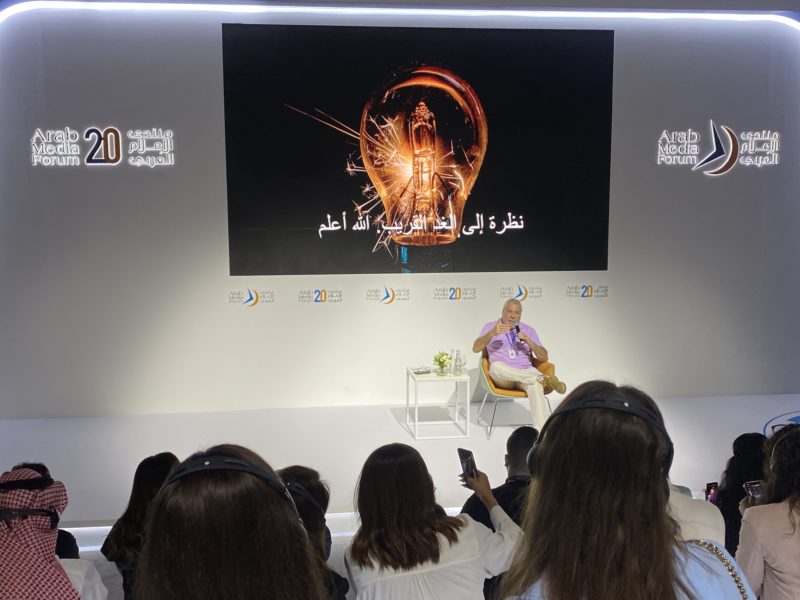Andrew Perkis Speaks at WAN-IFRA Conference

Digital content becomes more and more popular each year, and print publishers have to learn how to deal with this trend, which shows its rise and popularity with each year. Dealing with the new ways of content presentation was the key topic for WAN IFRA (World Association of Newspapers and News Publishers) Middle East conference, which took place on 24-25th February in Dubai. Amongst many key speakers, Dr. Andrew Perkis from Norwegian University of Science and Technology in Norway gave his speech over virtual and augmented reality, and how news publishing industry can incorporate those technologies in production.
In the speech “Virtual Reality in Story Telling”, Dr. Perkis explained technological aspects and opportunities of the virtual and augmented realities. He provided a deep view in how can a human get in the virtual reality, and what technologies can allow to reach this goal. Despite the professor told that at the present moment providing virtual reality to masses is “too expensive”, he also draw possibilities which emerge and the view of the future, whcih people are going to, according to the professor’s opinion. In the presentation, Andrew Perkis went to the history, and analysed how people are getting from printed media to the more complicated ways of getting the content. He implied an idea that people will be using virtual reality on a daily basis, and told that “It will change the view of journalism”, highlighting that from traditional print storytelling journalists will become more of designers and transporters of emotions.
To prove his points and to demonstrate the opportunities of the virtual and augmented realities, Dr. Perkis presented his project “Parken”, which is also translated as “The Park”. The project is built-up public place, a park, where people may walk around the place. The unusual point about this place is installed with sensors, lightning, audio equipment, and projectors along the park in order to give to people the content while they walk along the park. According to the professor, the unique point of the Park is that while consumers are walking, they are getting different parts of a story, as in “chapters” of a book. Dr. Perkis also mentioned that the construction took a lot of time and work with “thousands” of cabels to build up the place. To recreate the story, and to transfer emotions and mood, the NUST analysed and explored human brain to determine how various aspects may influence on the spectators.
Despite the presentation, presentation, and arguments of Dr. Perkis, some people expressed “doubts” over the project due to the absence of direct monetization ways, and difficulties to incorporate some hard news or business stories. Professor agreed on some points of the doubts, but shared some of his own ideas, “There are some powers who want virtual reality to find its place.” He explained that for almost every story, even to business story there is a way to exted the reality, and to transfer the actual view of the event place, or to transfer emotions.


